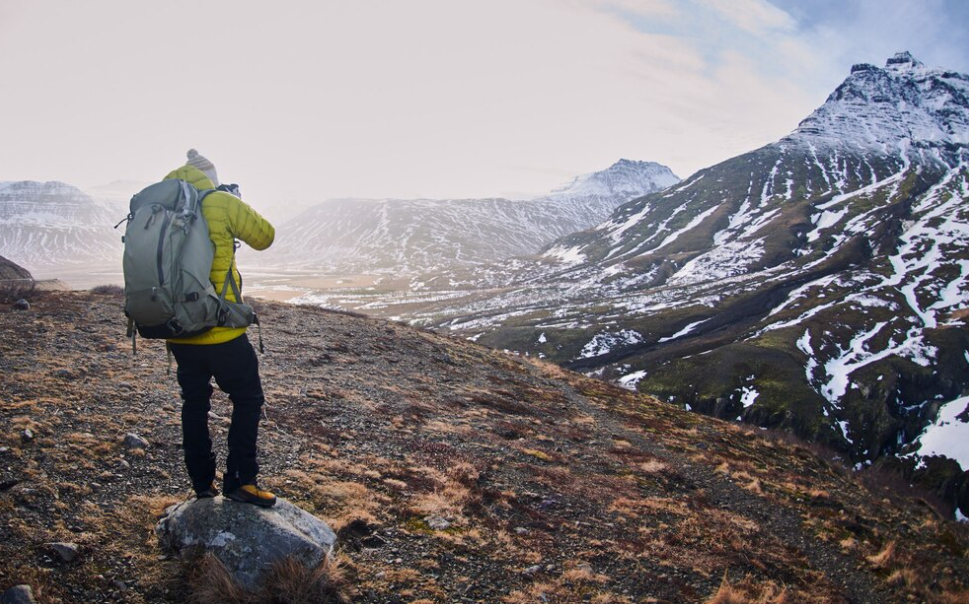Choosing the best time to trek to Everest Base Camp is crucial for a successful and enjoyable adventure, as the timing significantly impacts the experience due to varying weather conditions and trekking challenges. The prime trekking seasons to consider are spring (pre-monsoon) and autumn (post-monsoon), each offering distinct advantages and conditions.
Spring, which spans from late March to early June, is widely regarded as the optimal time for trekking to Everest Base Camp. During this period, the weather is generally stable, and the temperatures are relatively mild compared to other times of the year. The clear skies and moderate temperatures create ideal trekking conditions, allowing for spectacular views of the surrounding peaks, including Mount Everest itself. Additionally, spring is the time when the rhododendron forests are in full bloom, adding vibrant colors to the already breathtaking landscape. This season is also favored because it aligns with the pre-monsoon period, reducing the likelihood of heavy rainfall that could disrupt travel plans or trail conditions.
Autumn, from late September to early November, Everest Base Camp Trek essentials is another excellent time for the Everest Base Camp trek. The post-monsoon season offers clear skies and crisp air, with cooler temperatures that are comfortable for trekking. The trails are often less crowded than in spring, providing a more serene and personal trekking experience. The air is clear, making for excellent visibility and memorable panoramic views of the Himalayan range. However, as the season progresses towards November, temperatures start to drop significantly, especially at higher altitudes, so trekkers need to be prepared for colder conditions.
Both seasons offer a balance of favorable weather and optimal trail conditions, but it is important to plan ahead and book accommodations and permits well in advance, as these times are popular among trekkers. Trekking during these periods also ensures that the chances of encountering heavy snowfall, extreme cold, or heavy rainfall are minimized.
Choosing the right time to trek involves considering not just the weather but also personal preferences for crowd levels and the type of experience desired. Whether you opt for the vibrant spring bloom or the crisp autumn clarity, trekking to Everest Base Camp during these ideal seasons enhances the adventure and allows for a more comfortable and memorable journey through the awe-inspiring landscapes of the Himalayas.
Introduction to Trekking Seasons
Understanding the trekking seasons is crucial for planning a successful Everest Base Camp Trek travel insurance, as the timing of your trek greatly influences the experience. The trekking seasons in the Everest region are primarily defined by the weather patterns, which can dramatically affect trail conditions, visibility, and overall trekking comfort. Each season offers unique benefits and challenges, making it essential for trekkers to choose the time that best aligns with their preferences and goals. By familiarizing yourself with the different trekking seasons, you can better prepare for the conditions you’ll encounter and enhance your overall experience. The major trekking seasons in the Everest region include spring, autumn, and monsoon, each characterized by distinct weather patterns and trekking conditions.
Overview of the Trekking Year
The trekking year in the Everest region is shaped by the region’s unique climatic patterns, which are influenced by its high altitude and proximity to the Himalayas. The year is generally divided into three main trekking seasons: spring, autumn, and monsoon. Spring and autumn are considered the prime trekking seasons due to their stable weather conditions, making them ideal for tackling the Everest Base Camp trek. These seasons offer the best visibility, comfortable temperatures, and relatively dry trails. In contrast, the monsoon season brings heavy rainfall, high humidity, and a higher risk of landslides and trail closures, which can make trekking more challenging and less enjoyable. By understanding the seasonal variations, trekkers can select the most suitable time to embark on their adventure, ensuring a more enjoyable and successful trek.
Spring Season: March to May
Spring, from late March to May, is widely regarded as the optimal time for trekking to Everest Base Camp. During this period, the weather is generally stable and relatively warm, with daytime temperatures ranging from mild to cool, making the trek more comfortable. The clear skies and moderate temperatures provide excellent visibility, allowing trekkers to enjoy unobstructed views of the majestic Himalayan peaks. Additionally, spring brings the blooming of rhododendron forests, adding vibrant colors to the landscape and enhancing the trek’s beauty. This season also aligns with the pre-monsoon period, which reduces the risk of heavy rainfall and trail disruptions. However, as spring progresses towards May, temperatures start to rise, and the trekking routes can become busier with other trekkers. Overall, spring offers a balanced combination of favorable weather, stunning scenery, and manageable trail conditions.
Autumn Season: September to November
Autumn, spanning from late September to November, is another excellent time for the Everest Base Camp trek. This post-monsoon season is characterized by clear skies, crisp air, and generally stable weather conditions. Temperatures are cooler compared to spring, providing a comfortable trekking experience without the intense heat of summer. The trails are often less crowded during autumn, offering a more tranquil and solitary trekking experience. The clear air and reduced humidity enhance visibility, allowing trekkers to fully appreciate the breathtaking views of the surrounding peaks. However, as autumn progresses towards November, temperatures at higher altitudes can drop significantly, so trekkers need to be prepared for colder conditions. Despite the cooler temperatures, autumn remains a popular choice for trekking due to its favorable weather and serene atmosphere.
Monsoon Season: June to August
Everest Base Camp Trek adventure The monsoon season, from June to August, is characterized by heavy rainfall, high humidity, and an increased risk of landslides and trail disruptions. During this period, the Everest region experiences frequent and intense showers, which can make trekking challenging and less enjoyable. The trails become muddy and slippery, and the risk of altitude sickness can be exacerbated by the high humidity and fluctuating temperatures. Visibility is often reduced due to clouds and mist, which can obscure views of the Himalayan peaks. Additionally, the monsoon season brings a higher likelihood of trail closures and flooding, which can disrupt trekking plans. While some trekkers may still choose to trek during this season to avoid crowds and take advantage of lower costs, the monsoon conditions generally make it less favorable compared to the drier, more stable weather of spring and autumn.
Winter Season: December to February
Winter, spanning from December to February, presents a unique but challenging environment for trekking to Everest Base Camp. During this period, the region experiences cold temperatures, with daytime highs often below freezing and nighttime temperatures plunging well below zero. Snowfall is common, particularly at higher altitudes, creating a beautiful yet harsh landscape. The trails can become covered in snow and ice, making them more difficult to navigate and increasing the risk of slips and falls. The air is crisp and dry, but the cold can be severe, especially at higher elevations like Gorak Shep and Everest Base Camp.
Despite the harsh conditions, winter trekking has its own appeal. The trails are much less crowded, offering a more solitary and serene experience. The stark, snow-covered landscapes provide a dramatic and pristine backdrop for trekkers, and the clarity of the winter air can offer breathtakingly clear views of the Himalayan peaks. However, winter trekking requires careful preparation and appropriate gear to handle the extreme cold and potential weather-related challenges. Trekkers should be prepared for potentially severe weather and ensure they have the right equipment and clothing to manage the cold and snow.
Weather Conditions and Their Impact
Weather conditions in the Everest region can significantly impact trekking experiences, with each season bringing distinct challenges and advantages. In spring and autumn, the weather is generally stable and favorable for trekking, characterized by clear skies, moderate temperatures, and low humidity. These conditions provide excellent visibility and comfortable trekking temperatures, making it the ideal time for most trekkers.
In contrast, the monsoon season brings heavy rainfall, high humidity, and increased risk of trail disruptions due to landslides and flooding. The trails become muddy and slippery, and visibility can be poor due to clouds and mist. Winter, while offering stunning snow-covered landscapes and fewer crowds, introduces extreme cold temperatures and potential snow-related challenges, making the trek more demanding.
Overall, understanding the weather conditions and their impact helps trekkers choose the most suitable time for their adventure, balancing factors such as visibility, comfort, and safety.
Trail Conditions Throughout the Year
Trail conditions on the Everest Base Camp Trek trekking routes vary significantly throughout the year due to changes in weather and seasonality. In spring and autumn, the trails are typically in their best condition, offering stable footing and clear paths. The weather is generally dry, reducing the risk of mud and slippery conditions. This makes these seasons ideal for trekking, as the trails are manageable and the risk of trail closures is low.
During the monsoon season, trail conditions can deteriorate significantly. Heavy rainfall leads to muddy and slippery paths, increased risk of landslides, and possible trail closures. The trails can become challenging and unsafe, with reduced visibility due to clouds and mist.
In winter, trails are often covered in snow and ice, adding a layer of difficulty to the trek. Snow can obscure the trail, making navigation more challenging, and ice can create hazardous conditions. Trekkers must be prepared for these harsh conditions with appropriate gear and experience. Each season presents different trail conditions that influence the trekking experience, requiring careful planning and preparation to navigate effectively.
Advantages of Trekking in Spring
Spring, from late March to May, is considered one of the best times to trek to Everest Base Camp due to several advantages. The weather during spring is generally stable, with moderate temperatures that make trekking comfortable. The clear skies offer excellent visibility, providing breathtaking views of the Himalayan peaks, including Mount Everest. Spring also brings the blooming of rhododendron forests, which adds vibrant colors to the landscape and enhances the trekking experience.
Additionally, the pre-monsoon period of spring reduces the risk of heavy rainfall and trail disruptions, making the trails more manageable and enjoyable. The season is popular among trekkers, leading to a lively atmosphere and a chance to meet fellow adventurers. While the trails can become busier as the season progresses, the overall conditions are favorable for a successful and memorable trek.
Advantages of Trekking in Autumn
Autumn, from late September to November, offers several compelling advantages for trekking to Everest Base Camp. The weather during autumn is characterized by clear skies, crisp air, and generally stable conditions, making it a favorable time for trekking. The visibility is excellent, allowing trekkers to enjoy unobstructed views of the majestic Himalayan peaks and the surrounding landscapes.
Autumn also benefits from cooler temperatures compared to spring, providing a comfortable trekking experience without the heat of summer. The trails are often less crowded than in spring, offering a more peaceful and solitary trekking experience. The post-monsoon season ensures that the trails are in good condition, with reduced risk of mud and landslides. Overall, autumn provides a serene trekking experience with favorable weather conditions, making it an attractive option for those seeking a quieter and more reflective journey.
Challenges of Monsoon Trekking
Trekking during the monsoon season, which spans from June to August, presents a unique set of challenges that can significantly impact the Everest Base Camp experience. The monsoon season is characterized by heavy and frequent rainfall, leading to several difficulties. Trails become muddy, slippery, and treacherous, increasing the risk of slips and falls. The heavy rains also elevate the risk of landslides and flooding, which can lead to trail closures or reroutes, potentially disrupting the trekking schedule.
Visibility is another major issue during the monsoon season. Everest Base Camp Trek best agencies Thick clouds and persistent mist can obscure views of the majestic Himalayan peaks, diminishing the scenic beauty that is a highlight of the trek. The high humidity and damp conditions can also contribute to discomfort and exacerbate altitude sickness, making the trek more physically taxing.
Additionally, the monsoon season sees fewer trekkers on the trails, which can be both an advantage and a disadvantage. While fewer crowds mean a more solitary experience, it also means fewer support services and facilities along the route. Trekkers must be prepared for these challenging conditions, with appropriate gear, increased caution, and a flexible mindset to handle the unpredictability of the weather.
Preparing for Winter Treks
Preparing for a winter trek to Everest Base Camp, which occurs from December to February, involves addressing several key factors due to the extreme cold and potential snow conditions. The temperatures during winter can drop well below freezing, both during the day and night, necessitating robust cold-weather gear. Insulated clothing, thermal layers, and high-quality sleeping bags rated for extreme temperatures are essential to staying warm.
Snow and ice are prevalent in winter, making trails more challenging and potentially hazardous. Trekking poles with snow baskets, crampons, and gaiters are crucial for navigating icy paths and deep snow. The risk of altitude sickness can also be heightened in winter due to the colder, drier air, so acclimatization and hydration are particularly important.
Winter treks also require careful planning regarding safety and logistics. Weather conditions can be severe and unpredictable, so it is essential to monitor forecasts and be prepared for potential delays or changes in the itinerary. Hiring experienced guides and porters familiar with winter trekking conditions can enhance safety and ensure a more successful trek.
Personal Preferences and Nuances
When deciding on the ideal time to trek to Everest Base Camp, personal preferences and nuances play a significant role. Each season offers distinct experiences, and choosing the right one depends on what trekkers value most in their adventure.
Spring is favored for its vibrant rhododendron blooms and relatively mild temperatures, appealing to those who enjoy a balance of good weather and scenic beauty. Autumn offers cooler temperatures and fewer crowds, which can be ideal for those seeking a quieter, more reflective experience. However, trekkers must be prepared for colder conditions as the season progresses.
Monsoon trekking attracts those who prefer solitude and are prepared for challenging conditions, while winter trekking is suited for adventurous souls who thrive in harsh environments and are prepared for extreme cold and snow. Personal preferences, such as tolerance for crowds, weather conditions, and physical challenges, will guide the decision on when to embark on the trek.
Conclusion: Choosing Your Ideal Trekking Time
Choosing the ideal time for Everest Base Camp Trek necessary permits is a decision influenced by a combination of factors, including weather conditions, personal preferences, and desired trekking experiences. Spring and autumn are widely regarded as the best times due to their stable weather and clear visibility, making them the most popular choices among trekkers. Each season, however, offers its own unique challenges and rewards.
Spring provides vibrant landscapes and moderate temperatures but can become crowded as the season progresses. Autumn offers serene trekking conditions and fewer crowds, with the added advantage of clear skies and crisp air. Monsoon and winter trekking, while less conventional, cater to those seeking solitude or are prepared for extreme conditions.
Ultimately, selecting the best time involves balancing these factors with personal preferences and trekking goals. By carefully considering these elements, trekkers can choose a time that aligns with their expectations, ensuring a more enjoyable and fulfilling Everest Base Camp experience.
Final Thoughts: Making the Most of Your Trek
Making the most of your Everest Base Camp trek involves more than just choosing the right season; it encompasses thorough preparation, understanding the challenges, and embracing the unique experiences each time offers. Regardless of when you trek, proper planning, suitable gear, and a flexible mindset are crucial for navigating the varying conditions.
Engaging fully with the trek, from the breathtaking landscapes to the rich cultural encounters, enhances the overall experience. By preparing adequately for your chosen season and embracing the adventure’s challenges and rewards, you ensure a memorable journey to one of the world’s most iconic trekking destinations.



